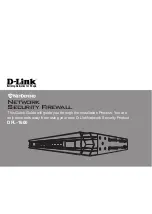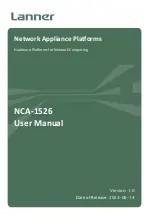
32-2
Catalyst 4500 Series Switch, Cisco IOS Software Configuration Guide - Cisco IOS XE 3.9.xE and IOS 15.2(5)Ex
Chapter 32 Configuring LLDP, LLDP-MED, and Location Service
About LLDP, LLDP-MED, and Location Service
To support non-Cisco devices and to allow for interoperability between other devices, the switch
supports the IEEE 802.1AB LLDP. LLDP is a neighbor discovery protocol that is used for network
devices to advertise information about themselves to other devices on the network. This protocol runs
over the data-link layer, which allows two systems running different network layer protocols to learn
about each other.
LLDP supports a set of attributes that it uses to discover neighbor devices. These attributes contain type,
length, and value descriptions and are referred to as
TLVs
. LLDP supported devices can use TLVs to receive
and send information to their neighbors. Details such as configuration information, device capabilities,
and device identity can be advertised using this protocol.
The switch supports the following basic management TLVs (which are optional):
•
Port description TLV
•
System name TLV
•
System description TLV
•
System capabilities TLV
•
Management address TLV
•
Power Management TLV
These organizationally specific LLDP TLVs are also advertised to support LLDP-MED:
•
Port VLAN ID TLV ((IEEE 802.1 specific TLVs)
•
MAC/PHY configuration/status TLV(IEEE 802.3 specific TLVs)
LLDP-MED
LLDP for Media Endpoint Devices (LLDP-MED) is an extension to LLDP that operates between
endpoint devices such as IP phones and network devices such as switches. It specifically provides
support for voice over IP (VoIP) applications and provides additional TLVs for capabilities discovery,
network policy, power over Ethernet (PoE), inventory management, and location information. By
default, all LLDP-MED TLVs are enabled.
LLDP-MED supports these TLVs:
•
LLDP-MED capabilities TLV
Allows LLDP-MED endpoints to determine the capabilities that the connected device supports and
what capabilities the device has enabled.
For configuration details, see the For configuration details, see the
Profile” section on page 32-10
.
•
Network policy profile
Allows both network connectivity devices and endpoints to advertise VLAN configurations and
associated Layer 2 and Layer 3 attributes for the specific application on that port. For example, the
switch can notify a phone of the VLAN number that it should use. The phone can connect into any
switch, obtain its VLAN number, and then start communicating with the call control.
By defining a network-policy profile TLV, you can create a profile for voice and voice-signalling by
specifying the values for VLAN, class of service (CoS), differentiated services code point (DSCP),
and tagging mode. These profile attributes are then maintained centrally on the switch and
propagated to the phone.
For configuration details, see the
Summary of Contents for Catalyst 4500 Series
Page 2: ......
Page 4: ......
Page 2086: ...Index IN 46 Software Configuration Guide Release IOS XE 3 9 0E and IOS 15 2 5 E ...
















































